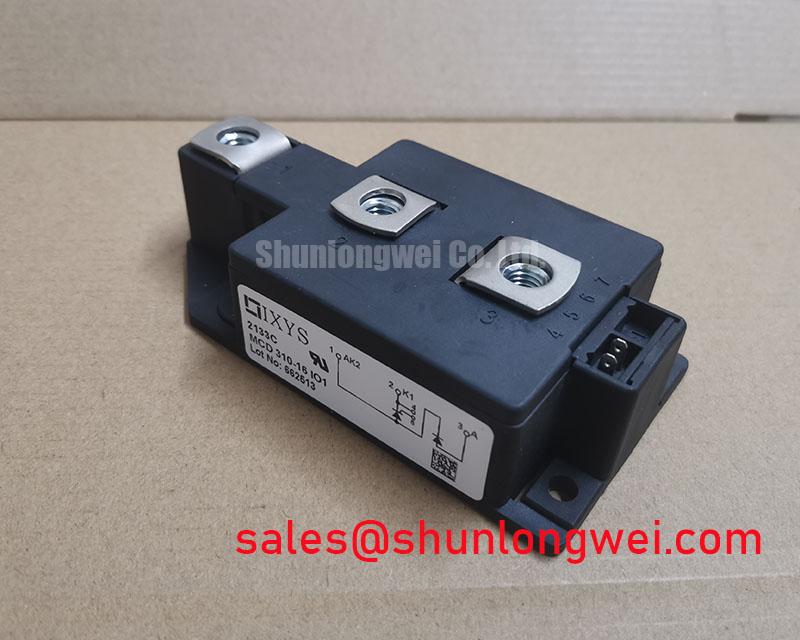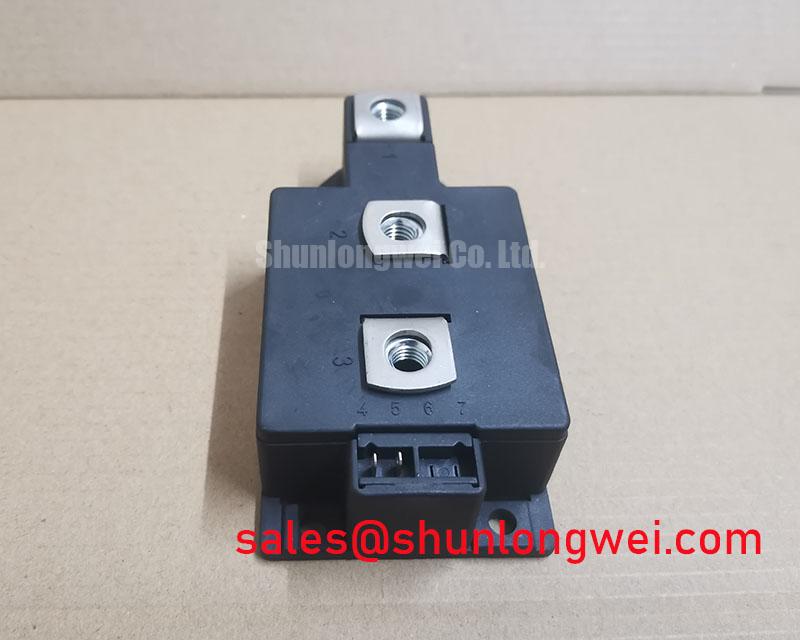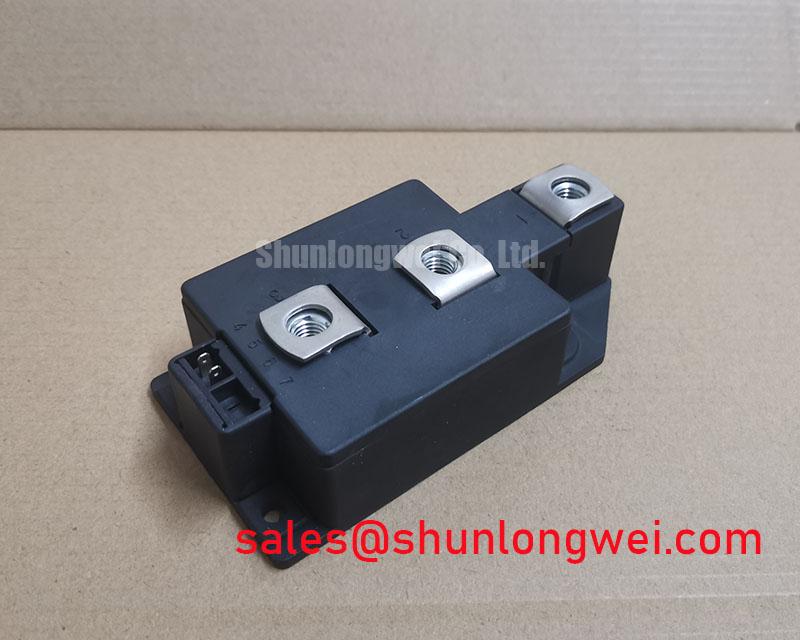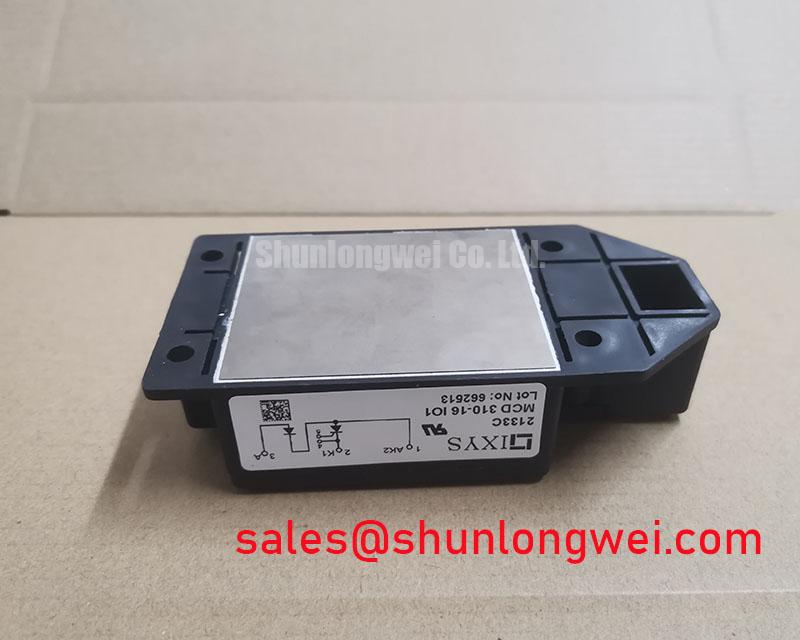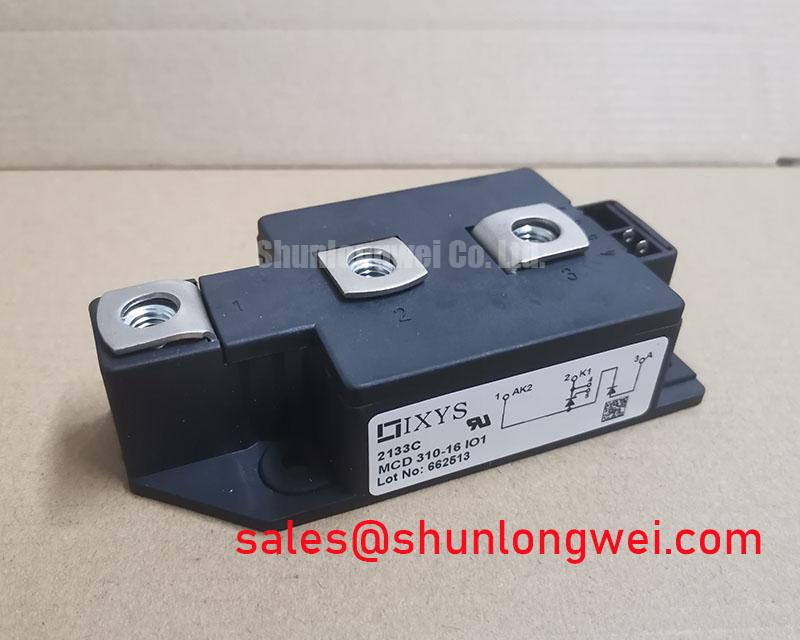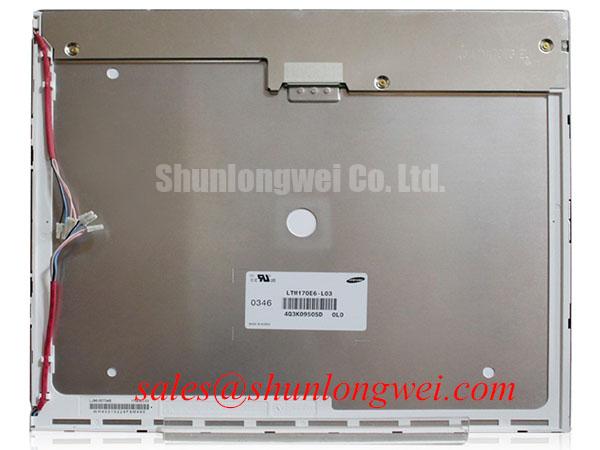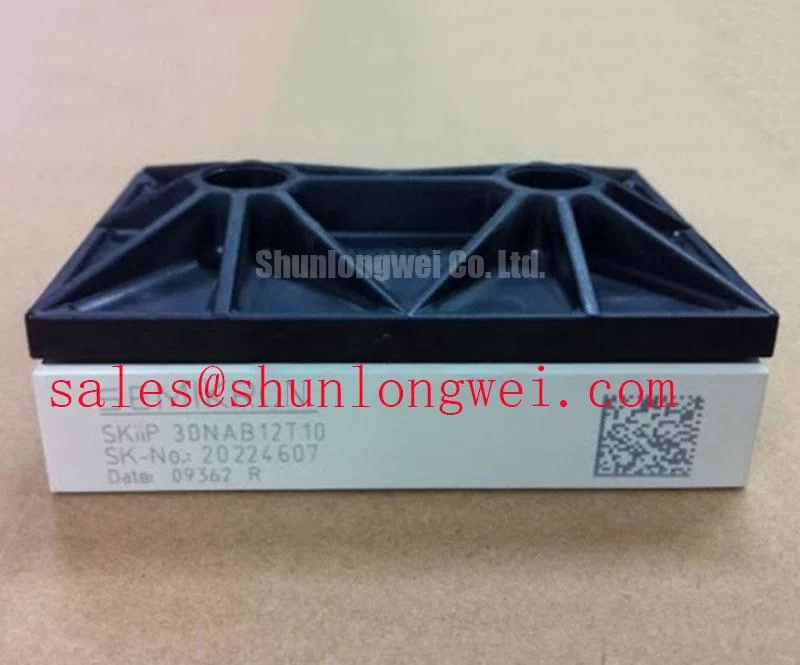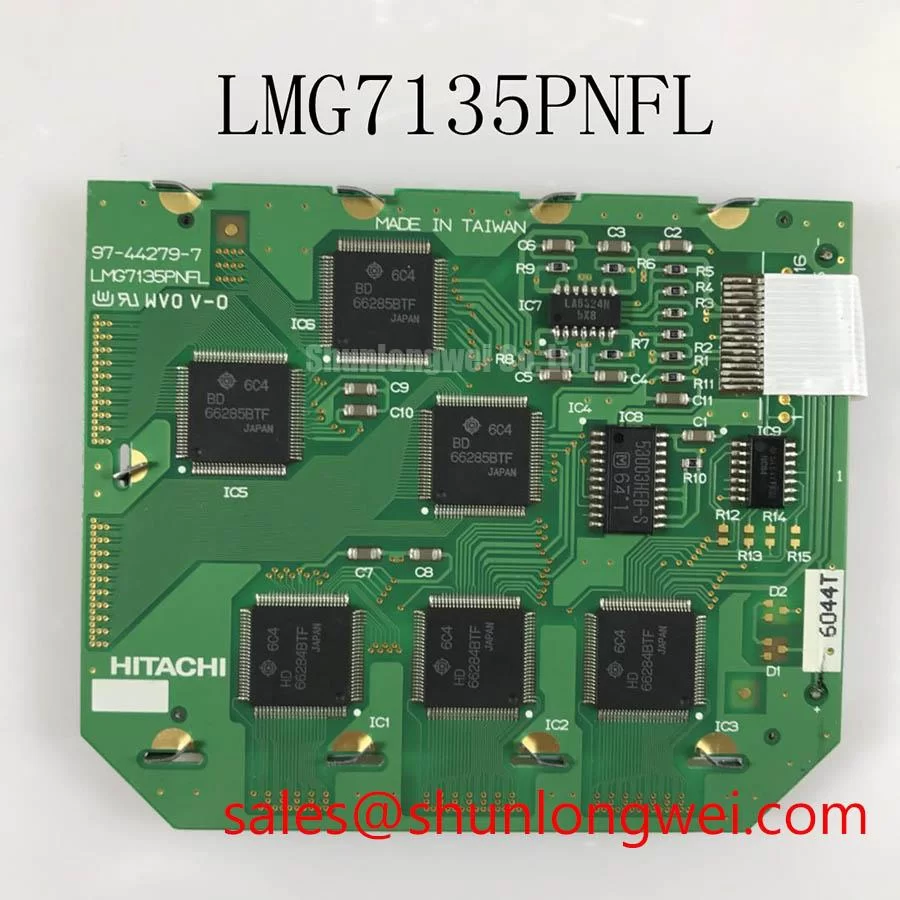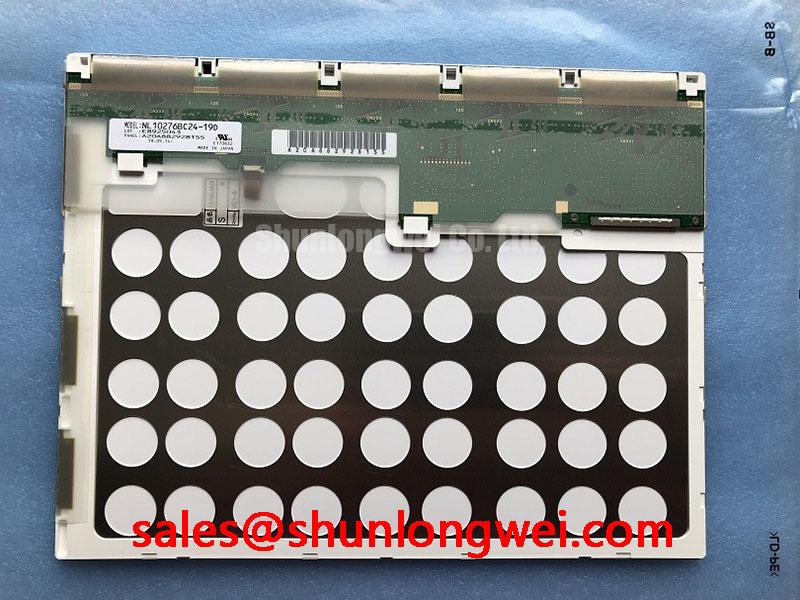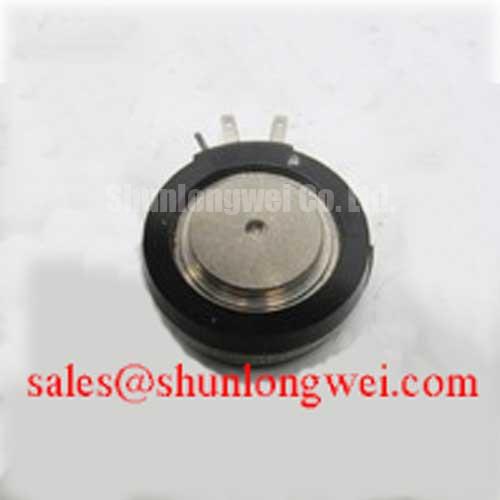MCD310-16io1: 1600V Pressure Contact Thyristor Module
Engineered for Unyielding Operational Integrity
In high-power systems, thermal cycling is a relentless force, often leading to solder joint fatigue and premature failure in conventional power modules. This degradation path is a primary source of costly downtime and maintenance, especially in applications that cannot afford interruption. The IXYS MCD310-16io1 Thyristor/Diode Module directly confronts this challenge. By leveraging a solder-free pressure contact design, it eliminates a critical failure mechanism from the power path, offering a fundamental enhancement in long-term operational integrity for systems demanding multi-year service life under strenuous conditions.
Field-Proven Integrity in Demanding Deployments
Consider a large-scale material handling system, such as a conveyor in a mining operation, powered by a high-voltage AC motor drive. The drive's previous phase control module, built with conventional soldering, experienced a failure after only 18 months due to the extreme daily temperature swings between idle and full-load states. The resulting unplanned shutdown halted production for hours. As a corrective action, the MCD310-16io1 was specified as a replacement. Its pressure contact design proved immune to the thermal-mechanical stress that destroyed the previous unit, restoring system dependability and drastically reducing the risk of future downtime.
A Strategic Asset for Long-Term Infrastructure Investments
For capital equipment and critical infrastructure, the Total Cost of Ownership (TCO) is a far more significant metric than initial component cost. The MCD310-16io1 is designed with this principle at its core. Its inherent resilience against thermal fatigue translates directly into extended service life and minimized maintenance requirements. This makes it a strategic component for industrial automation, power grid applications, and heavy transportation systems where reliability underpins profitability and safety. Investing in a component that designs out a common failure point is a direct investment in the financial and operational stability of the entire system. You can explore further topics on component failure in our guide on IGBT Failure Analysis.
Selection Framework: Pressure Contact vs. Standard Modules
Choosing the right module technology is a critical design decision. While standard soldered modules offer a lower upfront cost, the MCD310-16io1 provides superior lifecycle value in specific scenarios. Use the following framework to guide your selection:
- High Thermal Cycling: For applications with frequent start/stop cycles, heavy load variations, or wide ambient temperature swings, the pressure contact design of the MCD310-16io1 is strongly recommended to prevent solder fatigue.
- Extreme Vibration Environments: In railway, mining, or mobile heavy machinery, the mechanical robustness of a pressure contact interface offers superior performance compared to soldered connections, which can be susceptible to fracture.
- Lifecycle Cost Sensitivity: For systems where downtime and maintenance are exceptionally expensive (e.g., process control, grid infrastructure), the higher initial investment in a pressure contact module yields substantial long-term savings.
- Standard Duty Applications: For systems with stable operating temperatures and lower vibration, a high-quality soldered module like the VUB72-16NO1 may provide a cost-effective and reliable solution.
Anatomy of Reliability: The Pressure Contact Advantage
The exceptional durability of the MCD310-16io1 stems from its core construction. Unlike modules where silicon dice are soldered to a baseplate, this device utilizes a precisely calibrated mounting force to press the active components directly against the heat sink and electrical contacts. This approach can be compared to the difference between a welded joint and a high-tensile bolted connection in a steel structure; the bolted connection is engineered to manage dynamic stress and thermal expansion without fatigue.
This design yields two key engineering benefits. First, it eliminates the interface layers of solder, which are often the first point of failure due to the mismatched Coefficient of Thermal Expansion (CTE) between copper and silicon. Second, it ensures a consistent and reliable thermal path from the silicon junction to the heatsink over tens of thousands of cycles. This is further enhanced by an integrated Aluminium Oxide (Al2O3) DCB ceramic, which provides both excellent thermal conductivity and high voltage isolation, simplifying the overall thermal and mechanical design of your assembly.
Where Uninterrupted Power is Paramount: Core Applications
The specific characteristics of the MCD310-16io1 make it an optimal choice for a range of demanding power control applications:
- AC Motor Soft-Starters: Provides robust and reliable voltage control to reduce inrush current and mechanical shock on large motors, withstanding the repetitive thermal stress of frequent starts.
- Controlled Rectifiers: Ideal for building high-current, phase-controlled DC power supplies for applications like electrochemical processing and large battery chargers, where uptime is essential.
- Heavy Industrial Drives: Delivers the required ruggedness for motor controls in steel mills, paper processing plants, and port cranes that operate in harsh and thermally challenging conditions.
- DC Choppers and Static Switches: The fast turn-on characteristics and durable construction are well-suited for high-power DC switching applications.
Quantifying Robustness: Key Specification Insights
The performance of the MCD310-16io1 is best understood through its key datasheet parameters, which directly translate to real-world system advantages. Understanding the thermal properties is critical, and you can learn more about it in our article on Why Rth Matters.
| Parameter | Value | Engineering Meaning |
|---|---|---|
| V_RRM / V_DRM | 1600 V | Provides a substantial safety margin for operation on 480V and 690V industrial AC lines, protecting against transient voltage spikes. |
| I_T(AV) | 311 A (at Tc=85°C) | Defines the module's high continuous current handling capability, enabling its use in substantial power conversion systems. |
| R_thJC | 0.075 K/W | This extremely low thermal resistance from junction to case is the module's "superhighway" for heat. A lower value means more efficient heat extraction, allowing the device to run cooler and more reliably at high currents. |
| Mounting Force | 18 ±3 kN | This is not a suggestion but a critical assembly parameter. Applying the correct force ensures the integrity of the pressure contacts for both electrical and thermal performance over the device's lifetime. |
| I_TSM | 7800 A | Indicates exceptional surge current survivability. The module can withstand significant, non-repetitive fault currents for a short duration, preventing catastrophic failure during unexpected line events. |
Engineering Queries on the MCD310-16io1
1. What is the required mounting force for the MCD310-16io1 to ensure proper pressure contact?
A mounting force of 18 kN ±3 kN is mandatory as specified in the datasheet. This is not just for mechanical stability; it is essential to establish the low-resistance electrical and thermal paths that define the module's performance and reliability. Using a calibrated torque wrench and following the recommended clamping procedure is critical during assembly.
2. How does the pressure contact design improve reliability in applications with high thermal cycling?
In conventional modules, the different rates of thermal expansion and contraction between the silicon chip, solder, and copper baseplate create mechanical stress. Over thousands of cycles, this stress causes micro-cracks in the solder layer, increasing thermal resistance and eventually leading to failure. The MCD310-16io1's pressure contact design completely eliminates this solder layer from the main power path, thus removing the primary mechanism of wear-out and ensuring a significantly longer service life in thermally dynamic environments. For a deeper understanding of device longevity, review the fundamentals of Power Cycling Capability.
3. Can this module be used in parallel to achieve higher current ratings?
Yes, paralleling is possible, but it requires careful engineering. To ensure proper current sharing, devices should be selected with closely matched forward voltage drop (V_T0) characteristics. Furthermore, mechanical and thermal symmetry in the busbar layout and heatsink design is crucial to prevent one module from carrying a disproportionate share of the load, which could lead to thermal runaway.
4. What is the isolation voltage of this module, and what does it mean for system design?
The MCD310-16io1 features an isolation voltage (V_ISOL) of 3000V AC (RMS, 50Hz). This high isolation rating, enabled by the internal Al2O3 ceramic substrate, means the module's baseplate is electrically isolated from the active terminals. This simplifies system assembly by allowing multiple modules to be mounted on a single, non-isolated heatsink without the need for additional insulating pads, which would add thermal resistance and complexity.
5. What is the difference between a thyristor/diode module and a standard rectifier bridge?
A standard rectifier bridge typically contains four or six diodes in a fixed configuration to convert AC to DC. A thyristor/diode module, like the MCD310-16io1, contains controllable switches (thyristors or SCRs) alongside diodes. This specific module contains two thyristors, allowing it to be used for phase-controlled rectification (adjusting the output DC voltage) or as a bidirectional AC switch for applications like soft-starters and light dimmers, offering far more control flexibility than a simple diode bridge.
Future-Proofing Your Design Philosophy
As power systems are pushed to higher densities and longer operational lifetimes, the design focus must shift from specifying components that merely work to selecting those engineered to endure. The MCD310-16io1 embodies this shift. By integrating a technology that directly mitigates a known, time-dependent failure mode, it invites a new level of thinking. The next design challenge is not just about managing heat or handling current; it's about proactively engineering out the weak points in the system's lifecycle. Incorporating components like the MCD310-16io1 is a decisive step toward building power systems defined not by their peak performance, but by their unwavering, decade-long consistency.

